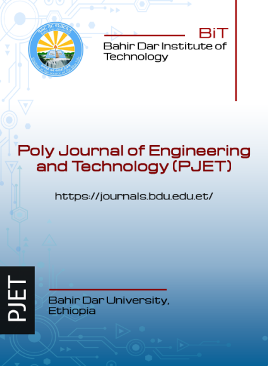The Effect of LULC Change on Stream Flow and Sediment Concentration: Case of Gilgel Abay watershed, upper Blue Nile basin, Ethiopia
Abstract
In recent years, there have been significant hydrological changes worldwide due to human activities such as converting land for industrial use, urban expansion, and agriculture. This study aimed to investigate how changes in land use and land cover affect streamflow and sediment concentration in the Gilgel Abay watershed. Data on streamflow was obtained from the Ministry of Water and Energy (MWE), while sediment concentration data was derived using flow and sediment rating curves of the Gilgel Abay River. Historical land use and land cover data for the years 2000, 2010, and 2020 were obtained from satellite images using supervised classification techniques. The study utilized the SWAT model to simulate streamflow and sediment concentration, and SWAT-CUP was employed for calibration and validation. The results indicated a decrease in cultivated land and grassland by 15.48% and 4.13% respectively, while urban areas, shrub land, and forest increased by 12.13%, 3.52%, and 2.72% respectively. Over the 20-year period, streamflow and sediment concentration decreased by 2.53m3/s and 4.41mg/l respectively, with favorable statistical values for the daily streamflow. The reduction in base flow was attributed to eucalyptus plantation and irrigation expansion, while the increase in forest and shrub land led to a decline in sediment concentration. This research is expected to provide valuable insights for researchers, decision-makers, and stakeholders to enhance the effective management of land and water resources.
Copyright (c) 2024 Poly Journal of Engineering and Technology (PJET)

This work is licensed under a Creative Commons Attribution-ShareAlike 4.0 International License.


